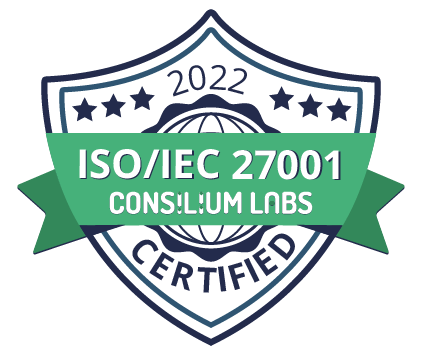Opportunities For Improvement In Lean Portfolio Management Decision-making
In the previous blog post, we reviewed three crucial areas within Lean Portfolio Management that can benefit by leveraging modern measurement and decision-making capabilities for better LPM Management. Those areas are: strategic theme setting, participatory budgeting, and backlog prioritization.
1. Improving Lean Portfolio Management through Better Collaboration and Prioritization of Strategic Themes and Results Indicators

Strategic themes are portfolio-level business objectives that provide competitive differentiation and strategic advantage. They serve as the contextual backdrop for portfolio strategy and decision-making, representing key aspects of the enterprise’s strategic intent.1
What most developers of this LPM activity get right:
Today's LPM collaboration can take many forms, including collaborative whiteboarding and SWOT/TOWS analysis. And, formulation of portfolio strategy and key results indicators generally DO consider enterprise vision, enterprise strategy, distinctive competences, financial goals, competitive environment, and portfolio contexts1.
Room for improvement:
- Today's decision-making tools collaborative brainstorm and whiteboarding tools have additional features that help prevent groupthink, dominance of the loudest voice, loss aversion, and other cognitive and organizational limitations. Look for features that permit you to objectively 1) identify areas of most or least agreement, 2) identify "red herring" objectives where all alternatives are so closely rated that there is no decision impact, and 3) provide a way to increase consensus through communication apps.
- Champion the need to prioritize strategic themes by using a process that starts with objectives. Strategic themes are not all equally important. Therefore, they must be prioritized to ensure resources are allocated accordingly. The same goes for key results indicators, which are used to track progress. Make sure that your LPM methodology has some way to tie backlog to objectives.
- Prioritization should not be based on ordinal scale measurements; ratio scale measurements should be used instead. Ordinal scale measures are prone to misuse and bad math. Look for tools that permit ratio scale measures, so you can preserve the ability to run sensitivity and optimization analyses.
2. Improving the Participatory Budgeting Function of LPM by Explicitly Linking Execution to Strategy
 Participatory budgeting2 (PB) for value stream budgeting is a live event where participants are assigned to one of several groups. Each group is given "play" money equal to the total portfolio budget, divided equally among the members.
Participatory budgeting2 (PB) for value stream budgeting is a live event where participants are assigned to one of several groups. Each group is given "play" money equal to the total portfolio budget, divided equally among the members.
The total portfolio budget is defined to be less than the aggregated proposed solution budget, and group members use their play money to vote for their preferred solutions. While this method seems to allocate budget to projects; instead, budget allocations are passed through to the designated value stream(s) for each solution.
Then, the LPM team aggregates and analyzes the results to make a final decision on value stream funding after verifying alignment with portfolio policies for budgeting and governance. Such policies usually include: The diversification of investment by horizon or solution lifecycle, and optimization of capacity utilization.
What most developers of this LPM activity get right:
Funding value streams instead of projects provides much needed flexibility in a rapidly changing environment. And the collaborative nature of participatory budgeting provides leaders with insights and perspectives from multiple stakeholders. When done right, this improves employee engagement, morale, buy-in, and improves communication in the organization.
Policies like diversification of investments across solution lifecycles helps prevent over-investment in the present at the expense of the future, or vice-versa. And, a policy of optimization of capacity utilization is essential to efficient management.
Room for improvement:
- Stronger linkage between proposed solution investments and prioritized strategic themes. To connect execution with strategy, prioritization of solution investments should be based on the expected contributions of solution investments to weighted strategic themes or results indicators. Look for solutions that let you measure relative contribution of alternative solutions, and that can be tested for sensitivity to changes in objectives over time.
- The mechanism for diversification of investments across investment horizons and optimization of capacity utilization is not specified. Look for software that at minimum, includes an advanced solver/optimizer to specify existing capacity constraints. Ideally, seek a solver that lets' you compare different constraint scenarios, including dependencies and calendar constraints.
3. Improving the LPM Feature Backlog Prioritization Function by Fixing What's Wrong With WSJF
 Features in a backlog are prioritized to maximize delivery of value sooner and optimize resource utilization. Most teams do this by using a benefit-cost ratio known as "Weighted Shortest Job First. or WSJIF"
Features in a backlog are prioritized to maximize delivery of value sooner and optimize resource utilization. Most teams do this by using a benefit-cost ratio known as "Weighted Shortest Job First. or WSJIF"
What the developers of this LPM activity get right:
Seek to use measure contribution benefits for prioritization of features.
Room for improvement: The philosophy behind WSJF is sound, but as a rule of thumb, WSJF provides unreliable measures.
- The benefit of each feature, referred to as “Cost of Delay” is prone to overweighting time-sensitive features and features that are expected to result in risk reduction or opportunity enablement. Instead, look for solutions that separate business value from constraints such as schedule and capacity.
- The cost of each feature, referred to as “Duration”, uses crude estimation techniques. Instead, use pairwise comparisons to improve accuracy.
- The “user business value” component of WSJF is a single number that is assigned from a Fibonacci sequence (an ordinal scale) that purports to represent the relative value of each feature. This approach fails to connect execution with strategy. Instead of evaluating the relative value of features on a nebulous “user business value” measure, each feature should be evaluated based on its expected contribution to each individual strategic theme or key result indicator.
In the next three blog posts, we’ll demonstrate how to adapt existing processes to implement these recommended improvements.
Please leave a comment below.












